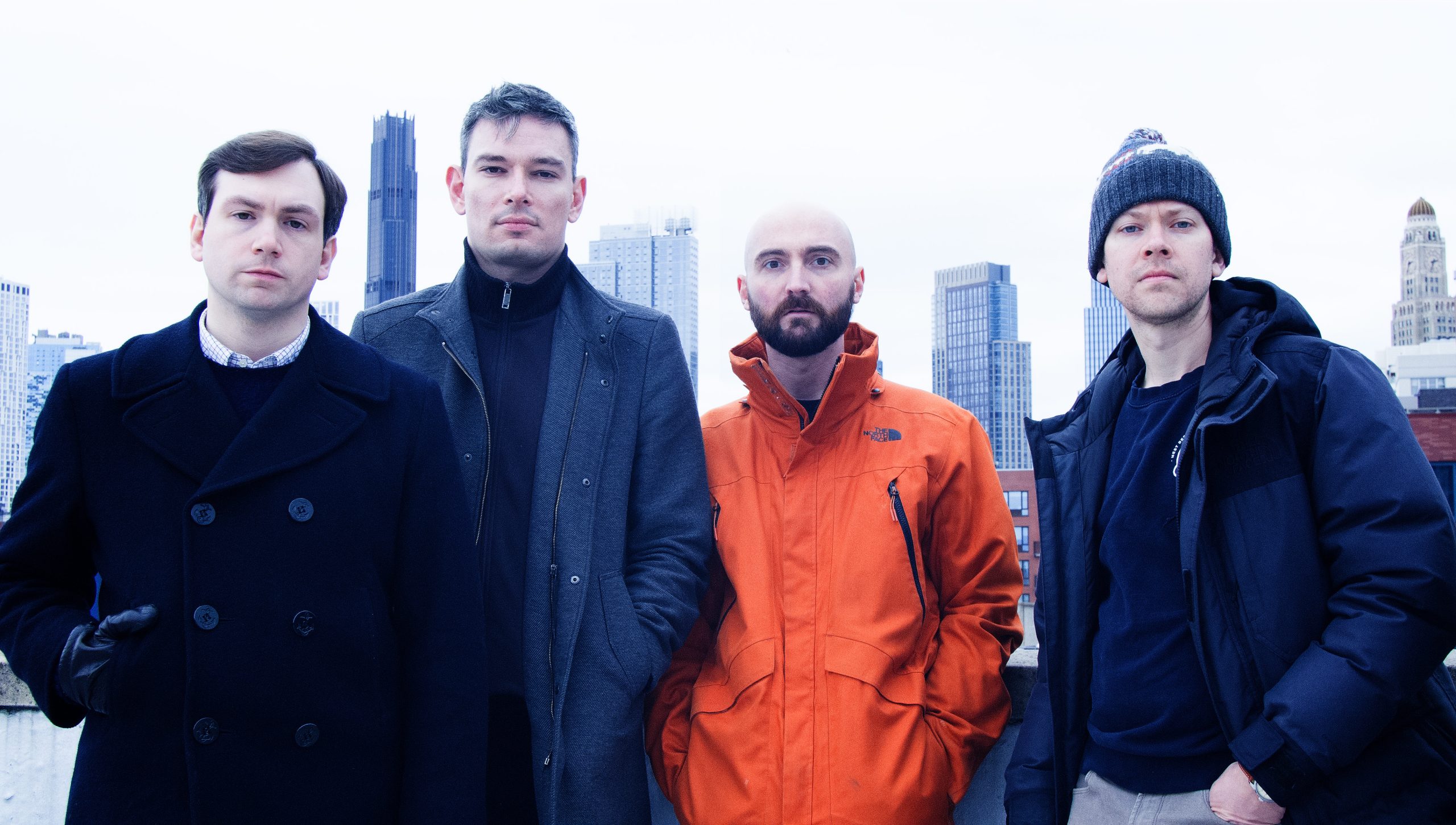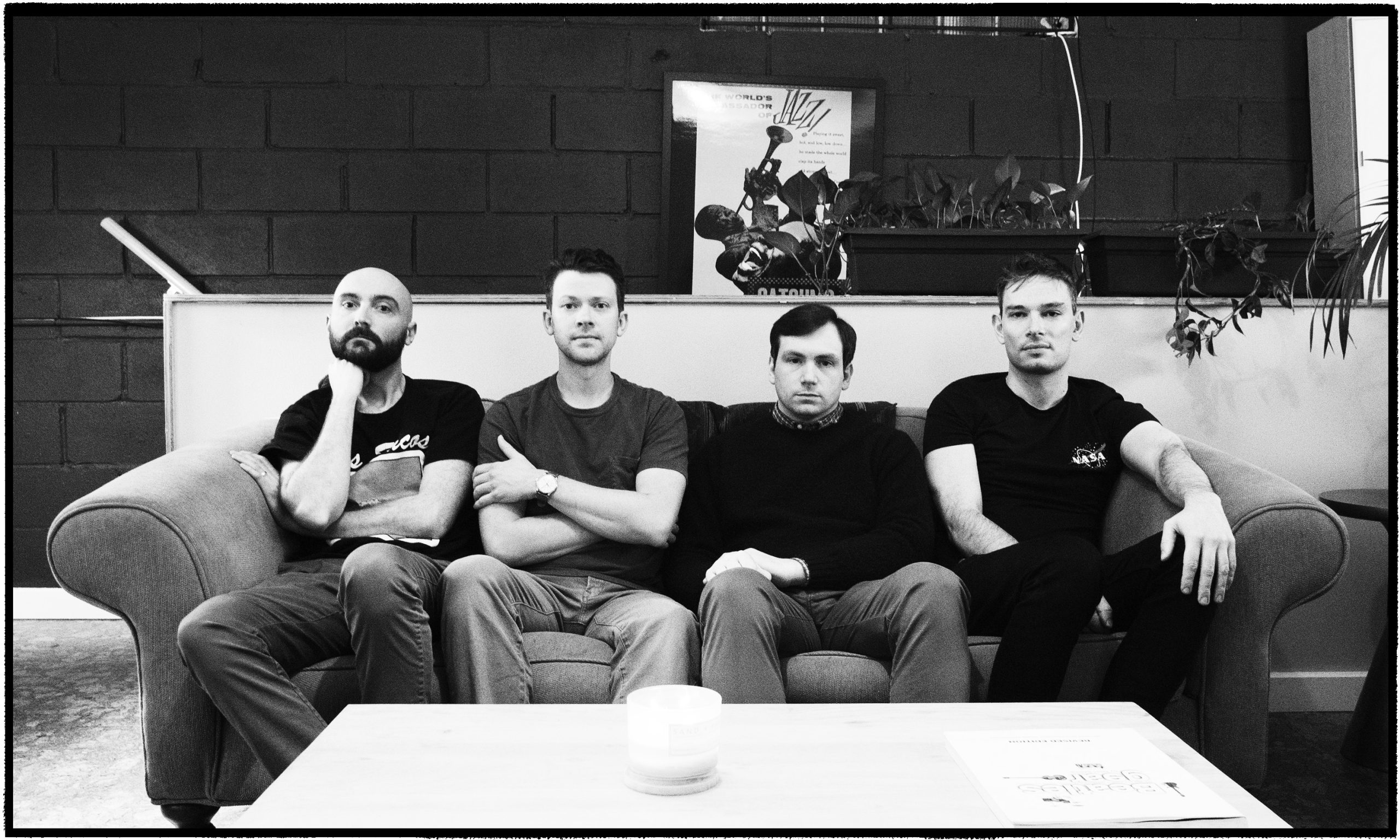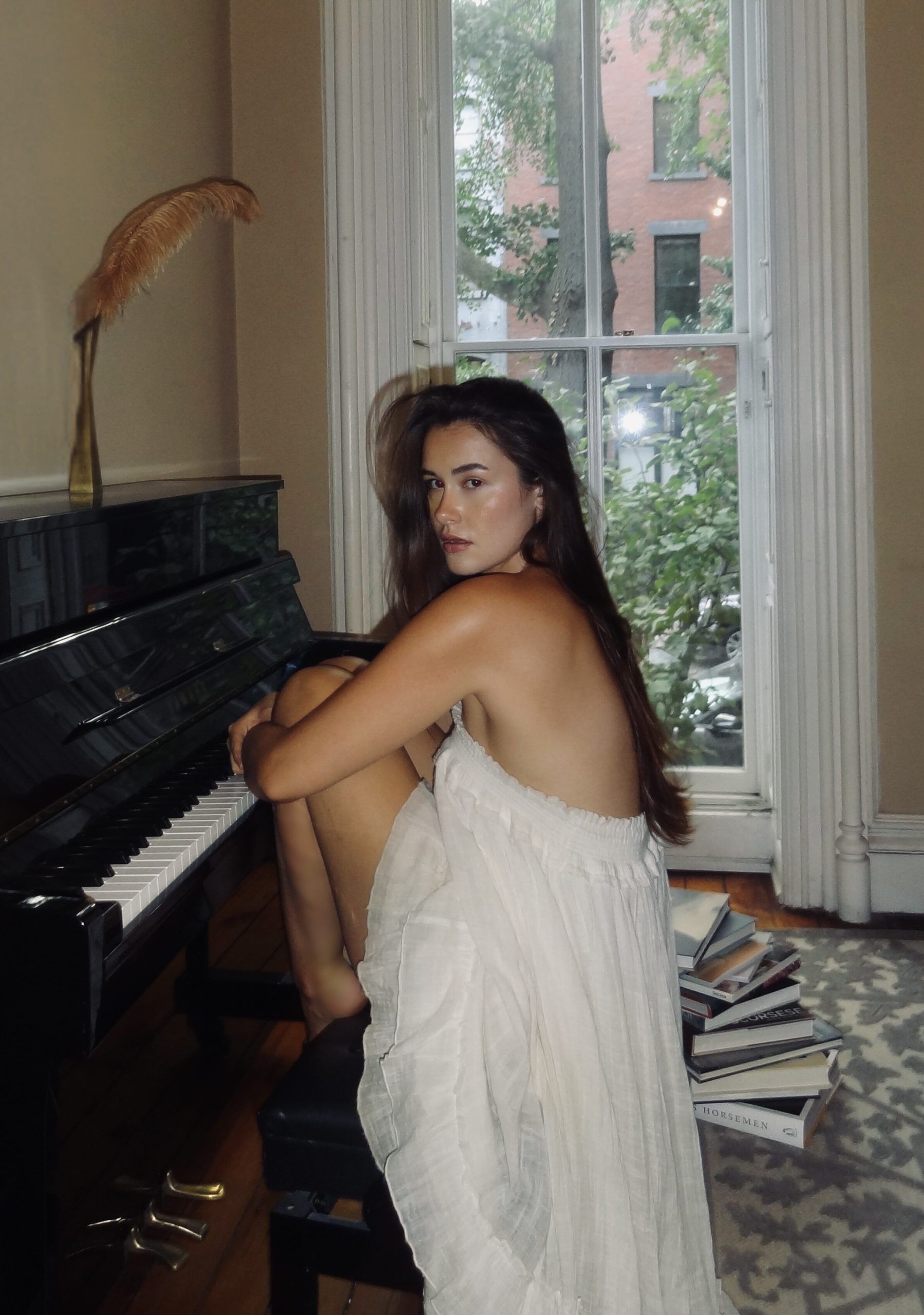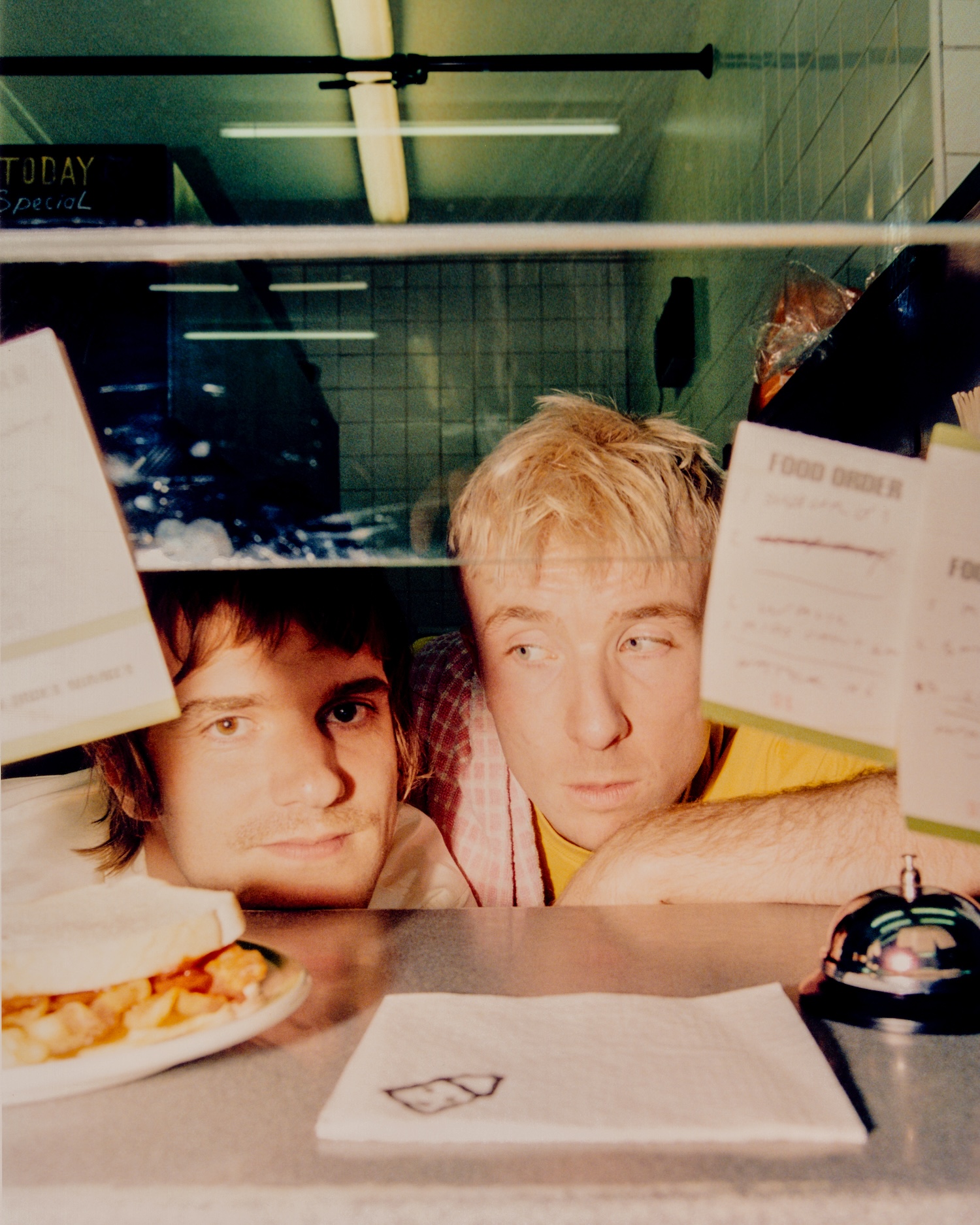Brooklyn four-piece rock band Earthquake Lights recently unveiled their new nine-track album, Signs of Life. The introspective release speaks about navigating the challenges of life, while simultaneously trying to explore new avenues and possibilities. As the band push boundaries and venture into new territories, they highlight the importance of self-reflection and growth in the face of adversity, delivering an encouraging and uplifting album.
The journey to get to Signs of Life was a mammoth one, with over 100 individuals being involved in some way or another to create the perfectly polished and captivating album we hear today. With organic, acoustic instrumentation and analog production making up the foundations of the music, Earthquake Lights set out to craft an album that took things back to their traditional roots. Singer Myles Rodenhouse shares, “We’re trying to make a timeless record that leans into traditions of music and playership, not the future of music. Samples and AI and drum loops are all amazing, but we’re trying to make records that celebrate humans. It took over 100 people to make this record, and I believe you can hear that in the sounds of this record.”
Signs of Life includes one of their most popular tracks, “Pictures” featuring Lindsey Lomis. Cascading strings glide over delicate, jazz-infused guitars and a steady beat, as the emotion-fuelled, soulful vocals ebb and flow like the ocean waves. “Pictures” offers a commentary on the role social media has played in our modern lives and how it can influence our relationships in an unhealthy way.
“January” mirrors the spirit of New Year’s resolutions and the determination people have at the beginning of the year to improve themselves and look forward with optimism. Rodenhouse explains, “This song is about maturing and understanding mistakes you’ve made. Pursuing whoever you want to be now instead of what your former self wanted. It’s not about it working out, it’s about being where you want to be.” The majestic string arrangements are expansive and stirring, evoking a sense of wonder and an uplifting atmosphere.
1883 Magazine sits down with Myles Rodenhouse, the lead singer of Earthquake Lights, to discuss the making of the album, its introspective themes and the beginning of a new chapter for the band.

Congratulations on the release of your new nine-track album, Signs of Life. How would you describe the album in just three words?
Reflective, Warm, Squishy.
Signs of Life has been described as a reflection of experimentation and exploration under pressure. Can you tell us more about what inspired the topics in the album?
It’s interesting to look back after writing an album, and to find a really clear set of themes that you didn’t even realize were tying something together, but that upon reflection were clearly there the entire time you were working on it. This is one of those records. We kind of just ended up with something that reflects where we were, and where we were trying to go. Coming to terms with mistakes, insecurities, and accepting them for what they are, then aiming to find something new. Exploring the unknown and searching for something that might define the future. Looking for signs of life.
Can you tell us more about the title of the album, Signs of Life, and where that came from?
“Signs of Life” we felt captured something intangible about the sentiment of the record. It’s a lyric in “Silhouette” that references looking for something (or someone) in outer space. Anything that would imply the existence of life. It’s something relevant in a way to the creative process of this record, trying to find little snippets of music and life in all sorts of experimental and exploratory improvisations. But also there’s a mindset that it captures for us. Something relating to a mental state and well being. Looking through your past, mistakes that you’ve made, and reflecting on what’s truly meaningful in your life and what’s not. Signs of life may not capture that exactly, but abstractly it feels somehow relevant.
Do you have a favourite track off the album, and if so why?
Personally, I think we got what we were looking for most closely with Silhouette, Pictures, and Four Letter Words. That may not really equate to favorites, but it reflects at least what I was after and for that reason I think of those tracks first. Everyone in the band would probably have a different pick though.
The album fluctuates from more relatable songs, to deeply introspective tracks. Does this correlate to certain periods in your life when you were writing the songs, or how did the sounds and themes develop over time?
I think it came more from just trying to be as open minded to different kinds of creative processes for this record as possible. The album was a curation of about 80 song ideas / starting points that we whittled down to 9 tracks. This allowed for a creative process that was really free to explore whatever seemed exciting in the moment, and as such a lot of the stuff just came from some unique, fleeting inspiration. It would be difficult to even remember exactly what each track started as, and they’ve all shifted a lot even through the writing process. But really we just looked back at things that were working after throwing a bunch of spaghetti at the wall and picked what stuck.

Throughout your music, there is a unique jazz flair to your sound. Where does this jazz influence stem from and was it something that you always knew would be incorporated into your music?
The Jazz thing is something we don’t think too much about, and my best guess is it mostly comes from the harmonic and melodic language we use. We’re drawn to chord tones that are a bit more colorful and less triadic overall. We really formed as a band around our college jazz combos and we of course love lots of jazz records, so that most certainly has impacted our instincts. But generally we’re just trying to make alternative rock/ pop music! Not sure we’ve considered it much past that.
You’ve explained how it took over 100 people to create this record. Can you talk more about this and the journey you took to get to the release of the album.
The record was made from a lot of different recording and writing sessions, rather than one large writing and recording period. As such we had a rotating crew of engineers and players, depending on arrangement choices and even just availability. Starting with the string players, we had a primary session at Abbey Rd with 23 players, but we also had a 10 violin section play at Douglass Recording for our song “In Your Dreams”. That’s to say nothing of the players that we enlisted for pre production/ demos before recording, and video/ promotional content around the record release. Add to that our contractors, Max Jacob in NYC and Hillary Skewes in London, who pulled together the string players for each location. Horn players for the record add another group of musicians, and then you think about all of the engineers that helped us track the actual band. Chris Gilroy, Sean Kellet, Irving Gadoury, Peter Karl. Then the assistants that were rotating through the studio on those days. Then we get to our mixing and mastering team, Andrew Maury, his assistants, Ruairi O’Flaherty, his assistants. Our managers, their team, Lindsey Lomis and her team…
Signs of Life is truly a work of art. How does it feel to finally have it out in the world and what do you hope listeners will take away from it?
We’re happy to have this one out there, and we’re ready for a new chapter. Looking forward to redefining what makes a record from this experience and adjusting the process as we move forward.
Hopefully our listeners will lean into some of the less mainstream elements of this music and will be inclined to explore traditional styles of music a bit. There’s so much great music out there that takes a little more engagement to get into, but that really pays off when you spend time with it, and it’d be cool to get listeners more interested in putting that effort in with classical, jazz, and complex/ atypical songwriting.
Where do you see Earthquake Lights going next? Are there any genres or themes you would like to explore in the future?
We’ll probably keep pushing towards improving our arrangement and production methods from this record, and I think taking a bit more time to try to pull something together will be a big part of the next record. Something less frantic and beset by deadlines. I’d also like to explore something a bit more minimal in the future, not necessarily less instrumentation, but accomplishing maximum impact with less activity. Exploring the bare minimum necessary to get what we’re after.
Earthquake Lights’ new record Signs of Life is out now. Follow @Earthquakelights
Interview Joe Beer





